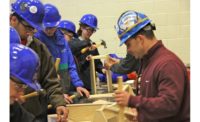The HVAC industry has undergone a tremendous amount of change over the past quarter century — perhaps more so than any other sector of the building design industry. These changes have come about predominantly to improve the indoor environment, address environmental issues associated with refrigerants, reduce emissions, improve equipment efficiencies, reduce operating costs, and reduce life cycle costs. Some of these changes, such as the change in refrigerants, had little or no impact ion the complexity of HVAC system designs, owner involvement, or even the amount of design expertise required. The manufacturers had the bulk of the effort to change refrigerants, which required them to make the necessary changes to the equipment — coils, compressors, fan speed, etc. — and then provide the required performance data for the engineers, so they could fully understand the impact of those refrigerant changes. Similarly, changes required to increase equipment efficiency were, again, primarily the responsibility of the manufacturers and required very little increased effort on the part of the engineer other than to understand exactly what these changes were.
Many other changes had a much larger impact on the role of the design engineer. These changes were numerous and extensive, requiring the engineer to have a much deeper understanding of the products, their capabilities, and their installation and maintenance requirements. Some had additional spatial requirements — floor space, ceiling plenum space, or space on grade or roof. Many of these systems were more complex than systems previously designed and required more owner involvement during the design phase and, perhaps equally as important, required more knowledgeable owners and maintenance teams to properly operate and maintain these systems. There were many new systems that gained popularity for some of the reasons mentioned — improved air quality, higher efficiencies, etc. A partial list of these included such equipment and systems as air cleaning (filtration, UV, etc.), energy recovery systems (wheels, coils, etc.), geothermal systems, variable refrigerant equipment, solar and wind utilization, condensing boilers, improved airflow measurement, and many others.
It only takes a short time in reading various engineering publications or reviewing the websites of some of the country’s top engineering firms to see that most of the buildings designed in the past decade or more implemented many of these newer technologies. Several buildings obtain LEED certification or similar recognition as high-performance buildings. More and more meet the standards set for net-zero buildings. The newer technologies installed in these buildings do often place a much higher burden on the building’s maintenance staff and owners to properly operate and maintain these systems. It doesn’t help that many building owners face a lot of the same challenges that we all face in the building industry. Engineering firms struggle to find enough staff because, when the economy is strong, engineering graduates gravitate toward the industry/manufacturing sectors. Contractors struggle to find enough plumbers, HVAC techs, electricians, and others. And, owners simply cannot find enough qualified personnel to properly operate and maintain the mechanical systems installed in their buildings. In some cases, owners simply make changes to save on maintenance costs. I — and I have to assume other engineers, too, after talking with them — can identify numerous projects I've designed to meet certain requirements only to find out that, after a number of years, no longer have systems being operated or maintained as designed. Here are some examples.
- Maybe the simplest example is with filtration, where MERV 13 or 14 filtration was designed. It’s not unusual that, when budgets get tight, owners at facilities, like schools and office buildings, replace the original specified filter with a much cheaper MERV 8 filter.
- To improve indoor air quality, especially during and after COVID, many designs included UV systems. UV bulbs have a pretty limited life and their efficiency starts to drop pretty dramatically after 5,000 or 6,000 hours. However, many owners replace UV bulbs only when they go dark.
- One of the biggest shortcomings we have seen in buildings is the failure to keep energy recovery systems properly operating after a period of time. Some issues include clogged energy wheels, failure to maintain proper airflows, and simply turning off an energy recovery system due to maintenance issues or to save on operating costs by eliminating or greatly reducing outside air into a building.
Although many improvements have been made during the past decades to improve IAQ, reduce operating costs, reduce emissions, etc., we’ve often seen a decline in the level of maintenance provided on those systems in many, but not all, building types. Some owners have recognized the importance of properly maintaining systems. One approach might be to have a maintenance contract with a third party. However, these contracts must be very specific about what is included — types and frequency of filter change outs, types and frequency of UV lamp change outs, response to various alarms, etc. Another effort to improve system maintenance is to have a multi-tiered alarm system specified and implemented with the building automation system (BAS). For example, with a three-level alarm, the lowest level may include things such as when to change filters or UV lamps. The mid-level alarm would include temperature, humidity, and airflow alarms. And, the highest level of alarms would include items that require an immediate response, such as equipment failure, freezing conditions, and other critical alarms. However, if the alarms aren’t acknowledged and the proper actions aren’t taken, these also do nothing to help keep the systems operating as intended.
While a good amount of the blame for systems not being properly operated and maintained, especially as time goes on, falls on the building management, some of the blame also needs to be placed on the design engineer in certain instances. Most engineers know, especially with repeat clients, the level of maintenance they can expect the owner to provide their facilities. For example, many school districts in rural areas have very limited maintenance staffs. Designing complex energy recovery systems, for example, for owners who will likely not even keep up with filter changes, is not a good design approach. Designing fan-powered terminal units above ceilings is equally problematic with owners having limited maintenance staff to get above ceilings to change filters. Designing systems requiring properly maintained chemicals in open hydronic systems is also a problem with limited staff. These are just a few of the examples where systems are designed with maintenance requirements that some clients will have difficulty providing. While the designs for all owners need to meet required efficiencies, air quality requirements, and temperature and humidity control, as an industry, we are not helping by designing systems we know will not be maintained or properly operated by owners due to limited staff or any other foreseeable causes. The capabilities of an owner’s maintenance staff have to be taken into account when designing a system for that particular client. Too often, this is overlooked during the design phase of a project.





